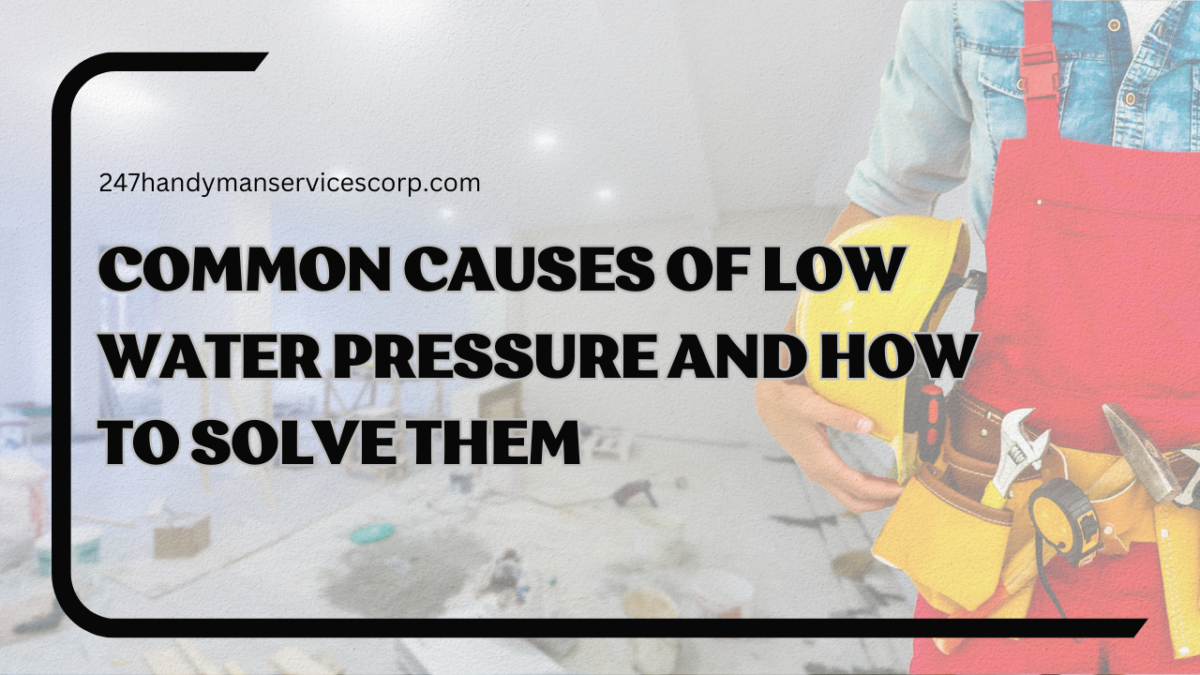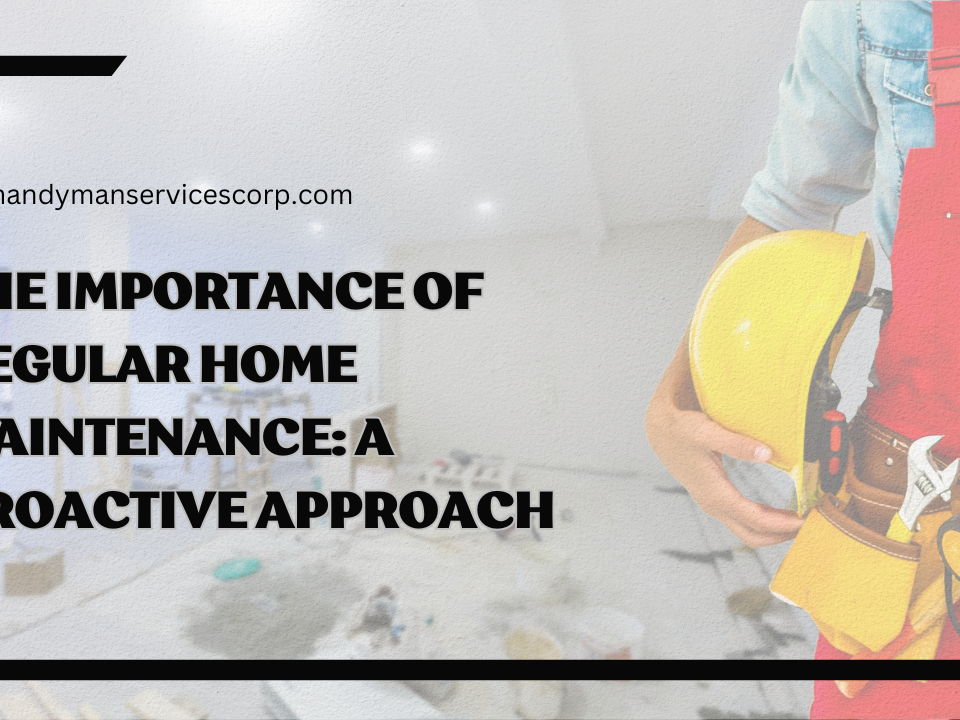Common Causes of Low Water Pressure and How to Solve Them

Why Is Interior Painting Important for Home Value in Lakewood?
April 4, 2025
Home Modifications for Seniors and Multi-Generational Living in Lakewood
April 16, 2025How Can You Quickly Identify and Fix Low Water Pressure?
Low water pressure in your home isn’t just inconvenient—it’s a sign that something in your plumbing system needs attention. Most American homes experience water pressure between 40–60 PSI, but when pressure drops below 40 PSI, it can signal leaks, clogs, or corroded pipes (Angi, 2025; Bumble Breeze, 2025). Fixing low water pressure isn’t just about convenience; addressing hidden leaks can save over 10,000 gallons of wasted water annually (LP Plumbing, 2025). With expert troubleshooting, you can restore strong, efficient water flow and prevent bigger plumbing headaches down the road.
Why Water Pressure Matters
Does weak water flow make showers and chores frustrating? You’re not alone. Normal residential water pressure should fall between 40–60 PSI (Angi, 2025; Bumble Breeze, 2025), and any noticeable drop may signal plumbing issues. By identifying common causes of low water pressure and applying fast, effective fixes, you protect your home, comfort, and wallet.
Did you know? The average U.S. household loses over 10,000 gallons a year to leaks—many of which also cause pressure drops (LP Plumbing, 2025).
Install a simple water pressure gauge on an outdoor spigot to check your pressure. If you’re consistently below these thresholds, troubleshooting is in order.
Top Causes of Low Water Pressure
1. Hidden Leaks
Leaks aren’t just costly—they’re the top cause of pressure drops. A crack as small as 1/8 inch leaks up to 250 gallons/day (Plumbing Tomball, 2025). Walk your home (check behind walls, under sinks, and around your foundation) for wet spots or mold.
2. Old or Corroded Pipes
Homes built with galvanized steel or cast iron piping see internal rust and narrowing over time. Older homes are especially prone (Oriplast, 2025). Corrosion blocks water and may contaminate it.
3. Clogged Fixtures or Pipes
Mineral build-up from hard water or debris can clog faucets and showerheads. Unscrew aerators/screens and soak them in vinegar, or consider replacement.
4. Pressure Regulator Failure
Most homes have a pressure regulator (PRV) near the main shut-off. If faulty, it can reduce (or sometimes spike) your pressure.
5. Municipal Supply Issues & Shared Lines
Sometimes, the problem is outside your home:
- City-side repairs
- Shared water lines in multi-unit buildings
Pressure dips during peak use, like mornings (Angi, 2025)
6. Partially Closed Shut-off Valves
After plumbing work, main shut-off or local fixture valves may not be fully open. Double-check at your water meter and under sinks.
Actionable Solutions: Step-by-Step
1. Check Your Water Pressure
- Buy a water pressure gauge.
- Attach to a hose bib (outdoor faucet); all interior faucets off.
- Open the valve fully and read gauge.
Is it below 40 PSI? Keep going.
2. Look for Leaks
- Walk your property for soft spots, damp drywall, or unexplained increases in your bill.
- For exact detection, call a pro—advanced tools can pinpoint leaks inside walls.
3. Clean or Replace Clogged Fixtures
- Remove faucets and showerhead aerators.
- Soak them in vinegar for 1–2 hours.
- Rinse and reinstall—if buildup is severe, consider upgrading to WaterSense fixtures (save 2,700 gallons/year; Wikipedia, 2025).
4. Inspect Shut-Off Valves
- Ensure all main and local valves are fully open.
- If your regulator is adjustable, set it back to 50–60 PSI if needed.
5. Address Old or Corroded Pipes
- If your plumbing is old, have a professional inspect for corrosion.
- Replacement with PEX or copper piping restores pressure and reduces future problems.
6. Talk to Neighbors or Call the Utility
- If the issue is widespread, the city may be working on lines.
- In apartments or condos, ask management about shared supply issues and timing.
Want more plumbing troubleshooting tips?
Learn more about plumbing solutions in Lakewood, NJ in this blog. Click here!
Pro Tools & Advice
- Leak Detection: Pros use acoustic sensors or infrared cameras to find hidden leaks, minimizing wall/floor damage.
- Fixture Upgrades: Installing WaterSense or pressure-boosting fixtures improves flow and saves water.
- Pipe Inspection: Camera scoping inside pipes diagnoses corrosion, clogs, or breaks.
Looking for all-around home maintenance solutions?
Read more about the benefits of skilled handyman services. Click here!
Take Action Today
Fixing low water pressure not only brings back convenience—it protects your home from damage and saves water and money in the long run. By addressing leaks, clogs, or old pipes swiftly, you’ll regain strong, steady flow and peace of mind. If DIY methods don’t solve the issue, our experienced Lakewood handyman team is ready to help—book a consultation session and restore your plumbing to top condition. Stay connected with us for more home efficiency strategies!
Frequently Asked Questions (FAQ)
1. How do I know if my water pressure regulator needs replacing?
If you notice sudden changes in pressure, noisy pipes, or consistently low/high readings even after checking for leaks or open valves, your PRV might be failing. It’s best replaced by a licensed plumber or handyman for safety.
2. Is low water pressure always a sign of a leak?
Not always. While hidden leaks are common, pressure can also drop due to clogs, city-side work, old piping, or partially closed valves. Systematic troubleshooting helps isolate the true cause.
3. Can hard water lead to low water pressure?
Yes. Mineral deposits in hard water can gradually clog aerators, showerheads, and pipes, restricting water flow. Installing water softeners and regularly cleaning fixtures helps prevent this.
4. How often should old pipes be inspected or replaced?
If your home has galvanized steel or cast iron pipes and is over 40 years old, schedule an inspection every few years. Visible rust, frequent leaks, or severe pressure drops mean it may be time for replacement.
5. What should I do if my neighbors also have low water pressure?
This usually points to a municipal supply or shared line issue. Contact your water utility or building management—they can confirm and provide a repair timeline.
6. What are the most common causes of low water pressure in homes?
Low water pressure is often caused by hidden leaks, corroded or clogged pipes (especially in older homes), pressure regulator issues, main water supply problems, or partially closed shut-off valves. Sometimes, the problem is isolated to fixtures or appliances affected by sediment build-up.
7. How can I tell if a leak is causing low water pressure?
If you notice wet spots, mold, or a sudden drop in pressure, a hidden leak might be the culprit. Even a small 1/8-inch crack in a pipe can waste up to 250 gallons of water a day (Plumbing Tomball, 2025).
8. Should I replace old pipes to fix low water pressure?
Yes, if your home has galvanized steel or cast iron pipes, corrosion can severely restrict flow. Replacing them with modern materials can restore proper pressure and water quality (Oriplast, 2025).
9. Can upgrading my fixtures improve water pressure?
Absolutely. WaterSense-certified or new low-flow fixtures can provide better flow while using less water, improving your experience and saving up to 2,700 gallons per year (Low-flow fixtures, Wikipedia, 2025).
10. Who should I call if I can’t fix low water pressure myself?
If the cause isn’t obvious or repairs involve your main supply or old plumbing, consult a qualified handyman or licensed plumber. Professional tools and experience mean issues are quickly found and repaired.




